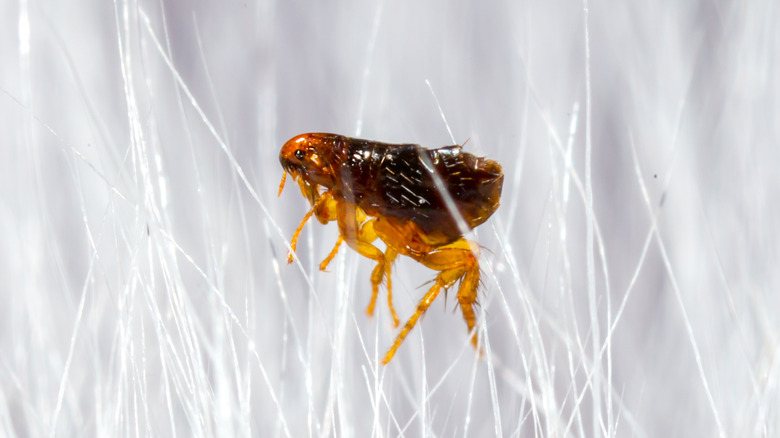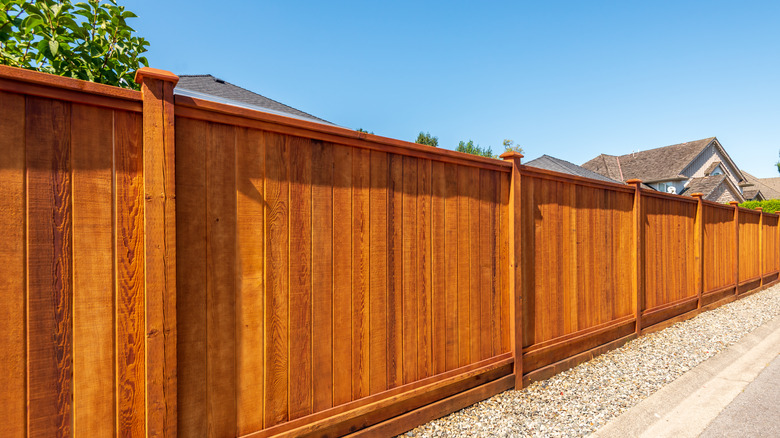How Building A Simple Fence Can Keep Your Lawn Flea-Free
Imagine installing a fence around your yard to ward off fleas. If that sounds like it is a strange investment for a holistic flea-control option, you may be surprised to learn it can be very effective. That's because the fence keeps out the biggest culprit that is likely bringing the fleas into your yard. That is any type of outdoor critter, like deer, that could make their way into your backyard. In other words, you install a fence that provides you with the protection you need to control what comes into your yard. Then, with a few additional strategies, you can reduce the risk that fleas will make their way onto your pets and into your home.
While you could install a 6-foot-tall, wooden privacy fence, you may not need to be that extensive if a shorter version will work. To be clear, a fence can be an expensive investment in your home for flea control alone, with the average cost ranging from $1,000 up to $10,000, depending on what you install and the size of your yard. A typical wood privacy fence costs around $12 to $50 per linear foot. While that could be out of your budget, there may be a few ways around this that could still help you. Although a fence with openings isn't going to keep fleas out if they are running rampant in your neighbor's yard, a wooden privacy fence could give you some nice benefits.
What type of fence keeps critters out
Fleas are problematic pests that can cause illness to your pets and infest homes rapidly. If you want to prevent fleas and other pests like ticks from getting on your lawn, build a fence that keeps their hosts out. They live on raccoons, rabbits, opossums, and even feral cats. Your fence, then, needs to do the best possible job of keeping out these larger pests.
For larger critters, especially deer, it's critical to build a fence that's at least 8 feet high. A shorter fence, one that's even 4 feet high, will offer some benefit if you cannot build a larger fence in your area. Height is important to keep leaping deer out; but, for smaller animals, like raccoons and rabbits, you'll need a solid fence without small gaps. Also, consider burying a portion of the fence several inches to keep burrowing pests out.
Make sure you talk to your local city council member or building department to learn all of the rules about fences in your area including how far from the property line they must be, height restrictions, and whether your neighbors have to approve first. It's wise to work with a local, licensed fencing installer to ensure your fence is built safely. Some areas don't allow fencing in the front yard, which means that deer may still get into your yard, bringing fleas with them.
Additional strategies to support your anti-flea fence
Unfortunately, larger animals are not the only ones to bring fleas into your yard; and some of the smallest critters, like mice and other rodents, can still get in around the fence through tiny holes. That's why you'll need to consider eliminating anything that draws in these pests, like garbage, leaves, or wood piles they can live in or eat. Also, keep the grass mowed and shrubs pruned away from the ground, which can also help to make your yard less desirable to rodents.
Next, realize that a fence is only going to work on preventing more fleas from getting into your lawn. Once you have the fence up, treat the inside area with a pesticide or other remedy to banish any existing fleas. A pest control company can also help with flea applications to the fenced-in area. Pesticides tend to be a necessary step if you already have a significant flea problem. There are also some plants you can add to your yard to ward off fleas. Also plan to remove thatch from your grass, avoid overwatering it, and trim back your tree overhang to let more light into your space. That's going to make it much harder for fleas to survive. The combination of the use of pest treatments and a fence could help you protect your yard from fleas this year.


